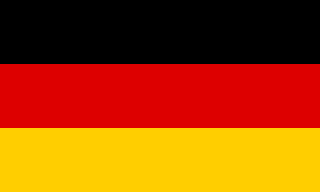U-36 may refer to one of the following German submarines:

Germany, officially the Federal Republic of Germany, is a country in Central and Western Europe, lying between the Baltic and North Seas to the north, and the Alps to the south. It borders Denmark to the north, Poland and the Czech Republic to the east, Austria and Switzerland to the south, France to the southwest, and Luxembourg, Belgium and the Netherlands to the west.
- SM U-36, was a Type U 31 submarine launched in 1914 and that served in the First World War until sunk on 24 July 1915
- During the First World War, Germany also had these submarines with similar names:
- SM UB-36, a Type UB II submarine launched in 1915 and sunk on 9 May 1917
- SM UC-36, a Type UC II submarine launched in 1916 and sunk on 21 May 1917

Type UC II minelaying submarines were used by the Imperial German Navy during World War I. They displaced 417 tons, carried guns, 7 torpedoes and up to 18 mines. The ships were double-hulled with improved range and seakeeping compared to the UC I type.
SM UB-36 was a German Type UB II submarine or U-boat in the German Imperial Navy during World War I. The U-boat was ordered on 22 July 1915 and launched on 15 January 1916. She was commissioned into the German Imperial Navy on 22 May 1916 as SM UB-36.
The UB II type submarine was a class of U-boat built during World War I by the German Imperial Navy. They were enlarged from the preceding type UB I and were more effective vessels. The boats were a single hull design with a 50-metre maximum diving depth and a 30-45 second diving time. In 1915 and 1916, 30 were built at two different shipyards.
SM UC-36 was a German Type UC II minelaying submarine or U-boat in the German Imperial Navy during World War I. The U-boat was ordered on 20 November 1915 and was launched on 5 June 1916. She was commissioned into the German Imperial Navy on 10 October 1916 as SM UC-36. In five patrols UC-36 was credited with sinking 24 ships, either by torpedo or by mines laid. UC-36 was rammed and sunk by the French steamer Molière off Ushant on 21 May 1917.
- During the First World War, Germany also had these submarines with similar names:
- German submarine U-36 (1936), a Type VIIA submarine that served in the Second World War until sunk on 4 December 1939
- German submarine U-36 (S186), a Type 212 submarine of the Bundesmarine commissioned into service in late 2015.

SM U-36 was a Type 31 U-boat in the service of the Imperial German Navy of the German Empire, employed in the commerce war in World War I.

U 31 was a class of U-boats built during World War I by the Kaiserliche Marine.

World War I, also known as the First World War or the Great War, was a global war originating in Europe that lasted from 28 July 1914 to 11 November 1918. Contemporaneously described as "the war to end all wars", it led to the mobilisation of more than 70 million military personnel, including 60 million Europeans, making it one of the largest wars in history. It is also one of the deadliest conflicts in history, with an estimated nine million combatants and seven million civilian deaths as a direct result of the war, while resulting genocides and the 1918 influenza pandemic caused another 50 to 100 million deaths worldwide.
| This article includes a list of ships with the same or similar names. If an internal link for a specific ship led you here, you may wish to change the link to point directly to the intended ship article, if one exists. |